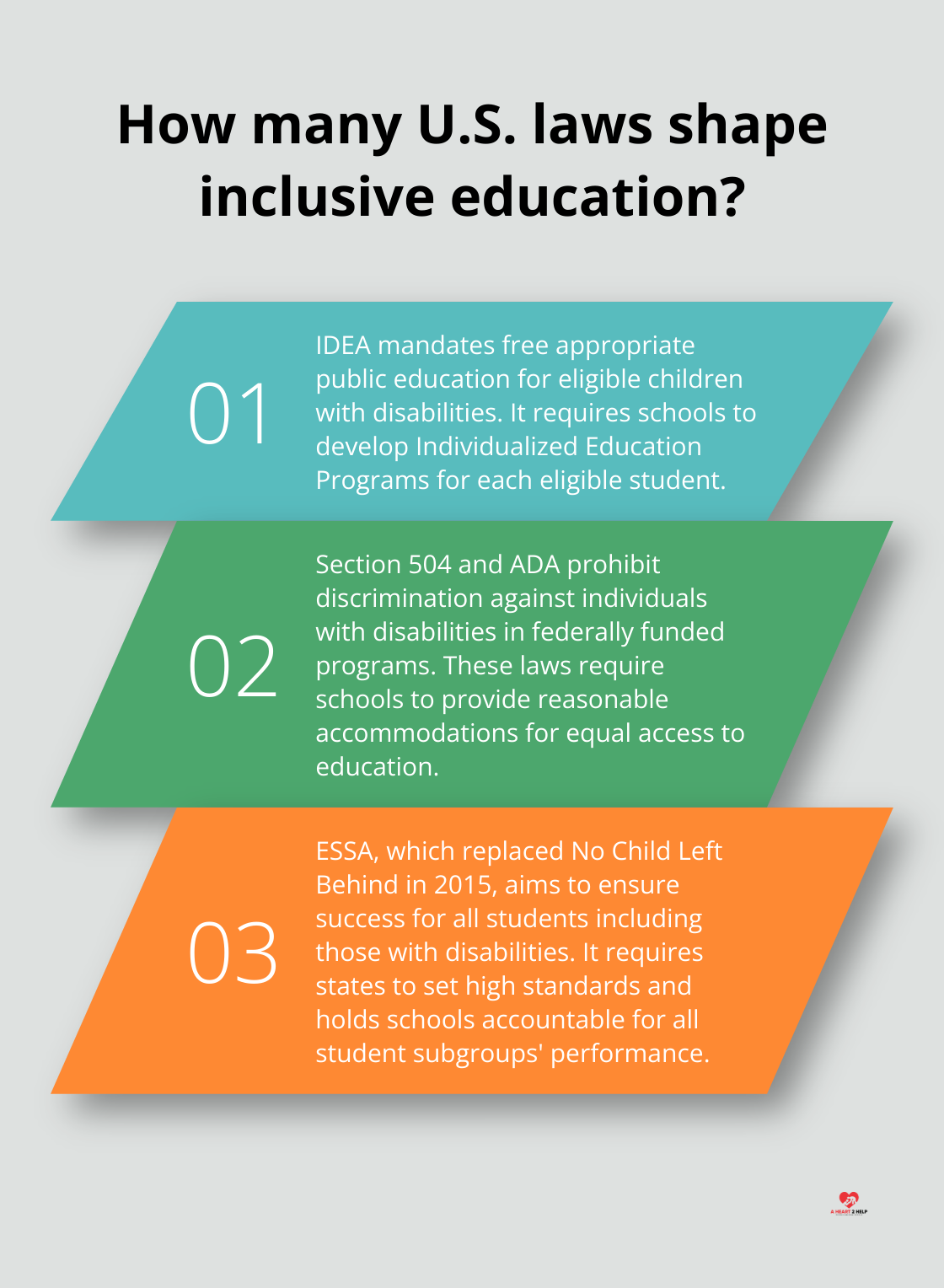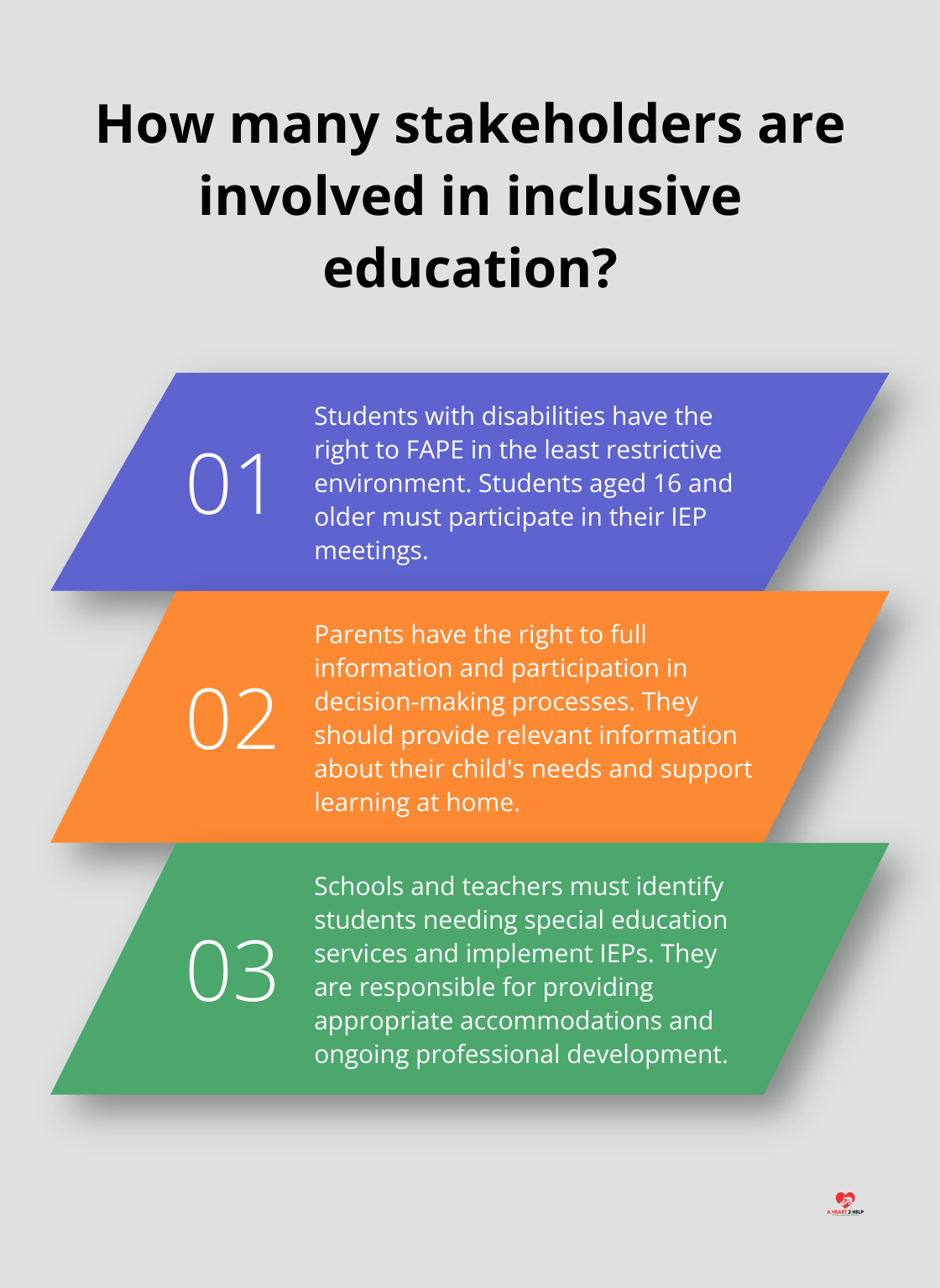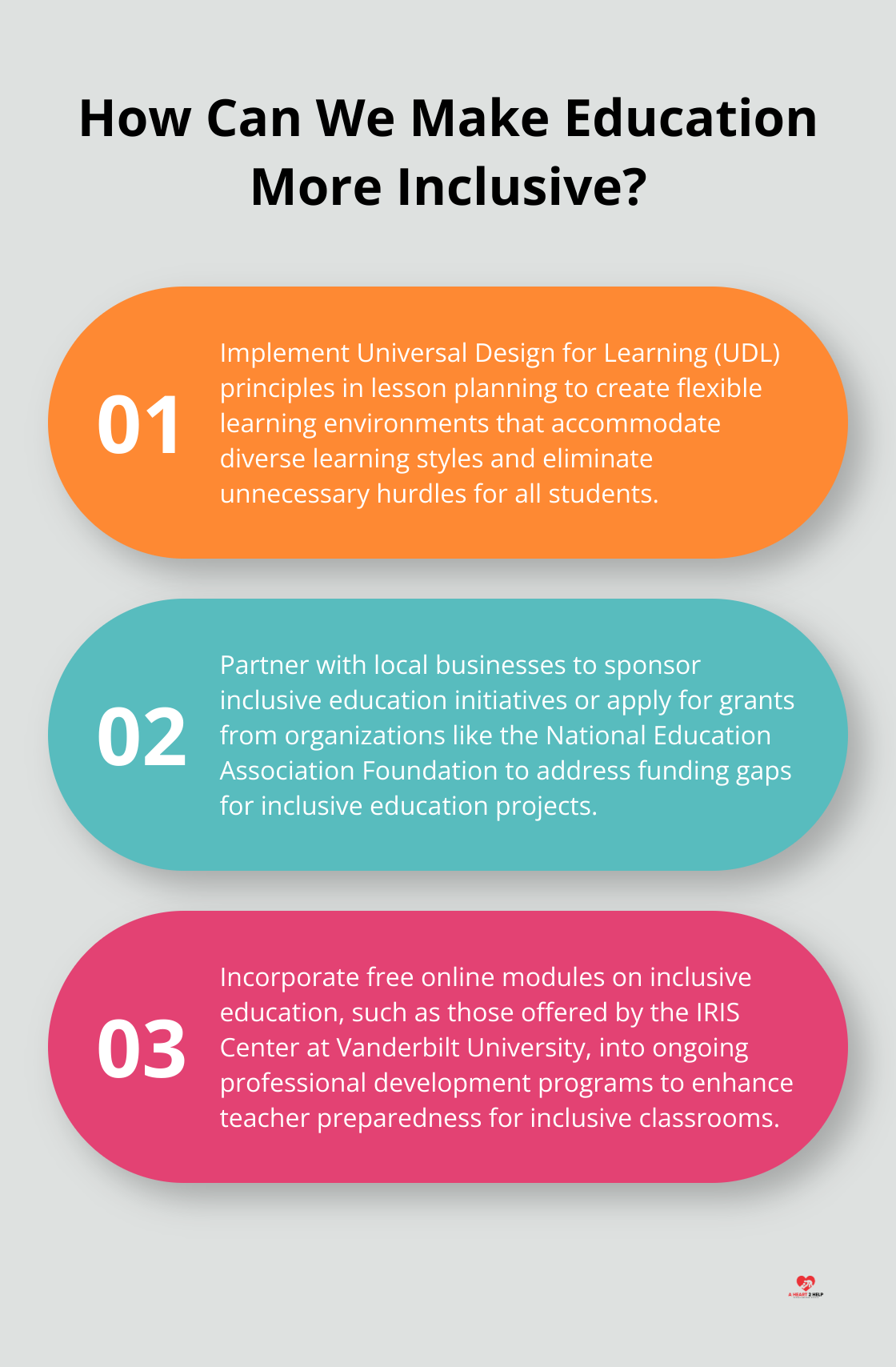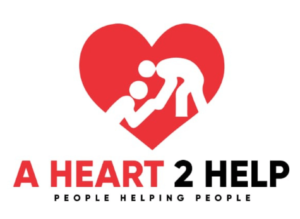At A Heart 2 Help, we understand the importance of a strong legal framework that supports inclusive education. This framework ensures equal opportunities for all students, regardless of their abilities or disabilities.
In this post, we’ll explore the key laws, rights, and responsibilities that shape inclusive education in the United States. We’ll also discuss common implementation challenges and potential solutions to help schools create truly inclusive learning environments.
What Laws Shape Inclusive Education?
The legal landscape of inclusive education in the United States rests on several key pieces of legislation. These laws work together to ensure that students with disabilities have equal access to education and receive the necessary support to succeed.
The Individuals with Disabilities Education Act (IDEA)
IDEA serves as the cornerstone of special education law in the U.S. It mandates schools to provide a free appropriate public education (FAPE) to eligible children with disabilities. Under IDEA, schools must develop an Individualized Education Program (IEP) for each eligible student, which outlines specific educational goals and support services. The law also emphasizes the importance of educating students in the least restrictive environment possible, which promotes inclusion in general education classrooms whenever appropriate.
Section 504 and the Americans with Disabilities Act (ADA)
While IDEA focuses on special education, Section 504 of the Rehabilitation Act and the ADA have a broader scope. These laws prohibit discrimination against individuals with disabilities in all programs and activities that receive federal funding (including public schools). They require schools to provide reasonable accommodations to ensure equal access to education. Such accommodations might include assistive technology, modified testing procedures, or physical accessibility improvements.
The Every Student Succeeds Act (ESSA)
ESSA, which replaced the No Child Left Behind Act in 2015, aims to ensure success for all students, including those with disabilities. It requires states to set high standards for student achievement and holds schools accountable for the performance of all student subgroups (including students with disabilities). ESSA also emphasizes the use of evidence-based interventions to support struggling students and schools.
Implementation and Enforcement
These laws create a comprehensive framework for inclusive education, but their effectiveness relies on proper implementation. Schools must stay informed about their legal obligations and continuously work to improve their inclusive practices. Parents and advocates play a vital role in ensuring these laws are upheld by understanding their rights and actively participating in educational decision-making processes.

Knowledge of these laws empowers communities to create more inclusive educational environments. Understanding the legal framework allows all stakeholders to work together to ensure that every student, regardless of ability, has the opportunity to thrive in our education system.
As we move forward, it’s important to consider how these laws translate into specific rights and responsibilities for students, parents, schools, and education agencies. Let’s explore these aspects in the next section.
Rights and Responsibilities in Inclusive Education
Student Rights: The Core of Inclusive Education
Students with disabilities have the right to a free appropriate public education (FAPE) in the least restrictive environment. This means schools should educate them alongside their non-disabled peers to the maximum extent appropriate. They have the right to necessary accommodations and modifications to access the curriculum and participate fully in school activities. A student with dyslexia might receive extra time on tests or access to text-to-speech software.

The Individuals with Disabilities Education Act (IDEA) requires that students aged 16 and older participate in their Individualized Education Program (IEP) meetings. This involvement ensures that the student’s goals and preferences shape educational decision-making.
Parent Involvement: A Key Element
Parents are essential to the inclusive education process. They have the right to full information about their child’s education and participation in all decision-making processes. This includes the right to request evaluations, attend IEP meetings, and challenge decisions through due process procedures.
Parents also have responsibilities. They should provide relevant information about their child’s needs and strengths, collaborate with the school team, and support their child’s learning at home. Parents might reinforce skills taught at school or help their child use assistive technology at home.
School and Teacher Responsibilities: Putting Inclusion into Practice
Schools and teachers implement inclusive education. They must identify students who may need special education services, conduct evaluations, and develop and implement IEPs. Teachers must provide appropriate accommodations and modifications, and adapt their teaching strategies to meet the diverse needs of all students in their classrooms.
Professional development is a key responsibility for schools. Schools must provide ongoing training and support to ensure that all staff members have the skills and knowledge needed to implement inclusive practices effectively.
State and Local Education Agency Obligations: Ensuring Compliance and Support
State and local education agencies have overarching responsibilities in implementing inclusive education. They must ensure that schools comply with federal and state laws regarding special education and non-discrimination. This includes monitoring school performance, providing technical assistance, and allocating resources to support inclusive practices.
These agencies also play a significant role in setting standards and policies that promote inclusion. The New Jersey Department of Education (for example) has implemented a tiered system of supports to help schools meet the needs of all learners, from those who struggle to those who need additional challenges.
As we consider these rights and responsibilities, it becomes clear that inclusive education requires a coordinated effort from all stakeholders. However, this coordination often faces challenges in practice. Let’s explore some of these implementation challenges and potential solutions in the next section.
Overcoming Barriers to Inclusive Education
Addressing the Funding Gap
Implementing inclusive education often faces financial hurdles. States are now guaranteed to annually receive the amount of IDEA funding they got in 1999. However, this falls short of the original formula which aimed for 40 percent of the additional costs of educating children with disabilities. Schools can explore creative funding solutions to bridge this gap. Some districts have partnered with local businesses to sponsor inclusive education initiatives. Others have applied for grants from organizations that offer funding specifically for inclusive education projects (such as the National Education Association Foundation).
Enhancing Teacher Preparedness
Many teachers lack confidence in meeting the diverse needs of students in inclusive classrooms. A 2018 survey by the National Center for Learning Disabilities found that only 17% of general education teachers felt very well prepared to teach students with mild to moderate learning disabilities. Schools can implement ongoing professional development programs focused on inclusive practices to address this issue. For example, schools can incorporate free, online modules on various aspects of inclusive education (like those offered by the IRIS Center at Vanderbilt University) into their training programs.
Creating Truly Accessible Environments
Physical and attitudinal barriers can significantly hinder inclusion efforts. While many schools have improved physical accessibility, attitudinal barriers often persist. Schools can implement awareness programs that involve both students and staff to combat this. Activities like disability awareness days and inclusive sports events can foster understanding and acceptance.
Balancing Individual Needs with Classroom Dynamics
Teachers face the challenge of meeting individual needs while maintaining effective classroom dynamics. Strategies like Universal Design for Learning (UDL) can create flexible learning environments that accommodate diverse learning styles. UDL is a teaching approach that works to accommodate the needs and abilities of all learners and eliminates unnecessary hurdles. Teachers can use UDL principles to design lessons that engage all students, regardless of their abilities or learning preferences.
Leveraging Technology for Inclusion
Technology plays a vital role in creating inclusive learning environments. Assistive technologies (such as text-to-speech software or alternative input devices) can help students with disabilities access the curriculum more effectively. Schools should invest in these technologies and provide training for both teachers and students on their use. Additionally, digital learning platforms can offer personalized learning experiences that cater to each student’s unique needs and pace.

Final Thoughts
The legal framework that supports inclusive education has driven significant progress in creating equitable learning environments. Schools now adopt Universal Design for Learning principles, integrate assistive technologies, and provide specialized training for educators. These efforts have opened doors for many students who might have been marginalized in the past.

Challenges persist, including funding gaps, attitudinal barriers, and the need for more comprehensive teacher preparation. All stakeholders must work together to overcome these obstacles and strengthen the implementation of inclusive education practices. This involves advocating for adequate funding, supporting ongoing professional development, and actively dismantling barriers to inclusion.
At A Heart 2 Help, we believe in the power of community support to drive positive change. Our care-app connects compassionate individuals with those in need, fostering a sense of belonging and mutual aid. We call on all stakeholders to remain committed to the principles of inclusive education, stay informed about legal rights and responsibilities, and hold institutions accountable for meeting their obligations.

